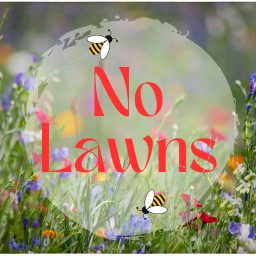I have a lawn fescue and Bermuda grass. I’d like go overseed with clover this fall but I’m concerned the Bermuda is going to choke anything else out. It isn’t native here and it gets into everything. Killing my lawn first isn’t really an option as the Bermuda will creep back in. How can I move toward a more sustainable yard with this awful Bermuda going wild?
Not sure there’s any way to selectively take out Bermuda grass. When I took out our front lawn, lots of Bermuda grass tried to take back the space. It took dousing it with vinegar during sunny days, then digging out the grass at the roots to beat it back. It required weeks of steady effort but now hardly any comes back. Only every couple of months do I need to make a pass through the area to fend off incursions.
Also: why bother with any grass? We’re much happier without a big green sponge out front. Our water usage is way down and the local wildlife likes the natives and our raised beds.
Dense plantings help keep it at bay. For flowers and grasses, cut in half the recommended plant spacing that you’ll find on gardening sites.
I have orange coneflower bordering a pocket prairie, planted one foot apart (center of plant to center of plant). Bermuda grass grows around the edge, but rarely enters it.
Yeah, Bermuda grass is the devil, is extremely hard to get rid of, and will out-compete clover and most other ground-covers. You’re probably always going to have problems with it creeping in no matter what you do. It won’t out-compete shade-loving plants in shade though, and can’t out-compete taller plants.
If you don’t mind chemicals, I’ve used a grass-selective herbicide (fluazifop or clethodim can’t remember which) to kill Bermuda grass in a rock bed and it worked ok (took many applications).
I’ve also suppressed it by sheet mulching with multiple layers of cardboard and 4"+ of woodchips on top. Still required some weeding after a while.
I’ve never tried it, but I’ve seen people kill grass by covering it with a dark landscape fabric. However, I think this would take many months to kill Bermuda grass.
Also, I’m not sure clover thrives where Bermuda grass does. Where I live, clover dies in the summer (too hot), and doesn’t like full sun in spring and fall.
Personally, I’m slowly replacing parts of my lawn by adding and expanding beds (sheet-mulch + woodchips), and planting fruit-trees and perennials in them. This seems more manageable to me than trying to do my entire lawn at once (I have a fairly large lot). I walk around the beds about once a week and pull any weeds I see, and pull weeds in beds I routinely walk by whenever I see them.
You’re going to need to do some weeding one way or another most likely. There are ways to kill everything but it will come back from any survivors, which could include from neighboring properties depending on your situation.
I’ve had success with overlapping layers of cardboard covered in a deep layer of mulch. Depending on how careful you are it’s likely some will still poke through and need hand pulling.
Another option if you want to preserve existing vegetation is to create an expanding circle of exclusion from which you pull it all out all of it as soon as it appears. This will require a lot of labor and diligence but if you like spending a lot of time in your garden it can work well.
But no matter what, you’ll need to stay on top of pulling it out or it will return from somewhere.



